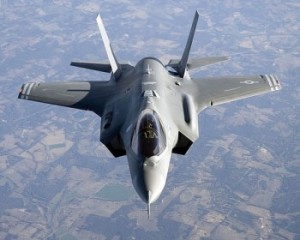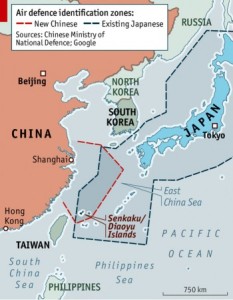By Jeong Lee.
The Republic of Korea has announced plans to buy up F-35 Joint Strike Fighters weeks after the program nearly went off the rails. But buying the warplanes won’t tip the balance against South Korea’s powerful regional rivals.

After facing vociferous opposition from the ROK Air Force’s retired chiefs of staff, Seoul delayed its KFX (Korea Fighter eXperimental) program by voting down competing F-15SEs “due to lack of its radar-evading functions,” according to Xinhua.
Then, on Nov. 22, the ROK Joint Chiefs of Staff announced it will purchase 40 F-35s after all—two overstrength fighter squadrons, or roughly one fighter group—as part of the KFX program. According to Aviation Week, additional 20 fighters “not necessarily F-35s, may be ordered later, subject to security and fiscal circumstances.”
The announcement came with curious timing. China recently demarcated an Air Defense Identification Zone (ADIZ) in the East China Sea and declared that any aircraft entering the ADIZ must file its flight plan in advance to Chinese authorities—and comply with their instructions.
But for South Korea, it’s a thorny problem. According to one ROKAF fighter squadron commander, who preferred his name not be used, the risks of confronting regional rivals like China and Japan are still far too high.
“While Japan and China may be our potential rivals someday, it never pays to antagonize them since an all-out confrontation involving any of the two states will prove deadly,” the squadron commander told me.
A ROKAF fighter pilot on the receiving end of Japanese or Chinese aerial onslaught might find himself encumbered by elaborate rules of engagement which may limit his freedom of action. This is coupled with a strategic imbalance in East Asia where both Japan and China clearly outspend South Korea on defense. Indeed, although the lieutenant colonel remained mum on his choice of fighters, he was mindful of Japan’s planned acquisition of the F-35s and China’s indigenous production of the J-20 fighter.

But according to the lieutenant colonel, the air force’s acquisition of stealth fighters sends an unequivocal message that Seoul is serious about countering China—and asserting its sovereignty over disputed territories such as the islands of Ieodo and Dokdo/Takeshima.
“It is only natural that we prefer such wondrous aircraft because they give us the capability to surreptitiously strike at the heart of our adversaries and guarantee our survivability,” he said.
For the ROKAF, there’s also the issue of numerical mass versus qualitative advantage. When I asked the lieutenant colonel if the ROKAF is willing to replace its aging fleet of third-generation fighter jets with unmanned combat aerial vehicles (UCAVs), he said the UCAVs will not satisfy ROK’s need for numbers as well as quality.
That is, given the likelihood of all-out conventional war with North Korea, fielding UCAVs may have marginal effect at best on Seoul’s ability to blunt a massive North Korean armored blitzkrieg.
Likewise, equipping a fighter group with F-35s without support from its sister fighter squadrons will also not satisfy the need for mass in the event of a lethal clash involving China or Japan.
There’s another risk inherent in “structural disarmaments.” This is a term that refers to when newer airplanes become more advanced—and more expensive to purchase and maintain—than preceding generations. The result is that a country’s air force ends up fielding fewer and fewer fighters, causing the ROK military to be spread thin, and limit its ability to respond to territorial rows with its neighbors.
In short, notwithstanding supposedly enhanced capabilities due to its acquisition of stealth fighters, the South Korean air force still lacks a coherent operational and strategic blueprint. Any South Korean response—to incidents over the islands of Ieodo or Dokdo/Takeshima for example—will likely remain limited in scale and symbolic by nature.
Indeed, a case can be made that the KFX program is mostly political posturing aimed at domestic audience as much as it is a reaction to perceived threats posed by its powerful neighbors.
South Korea’s politicians and strategic planners would do well to remember this next time they decide to plan another expensive arms purchase. They must prioritize strategic and operational planning over hardware acquisition—or get used to its military strength remaining out of balance.
(NOTE: This article originally appeared at War Is Boring on December 3rd but was later retracted. It is now cross-posted atOffiziere.ch.)


